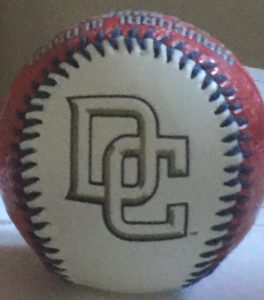February 6, 1912
The Washington Times reports that Fred Fitzgerald, the “new park keeper” has arrived in town. Among the  changes contemplated by Griffith and to be implemented by Fitzgerald:
changes contemplated by Griffith and to be implemented by Fitzgerald:
The pitcher’s box will be lowered, and the plate heightened, which will put the whole diamond on the level in place of the turtle back playing field which was was arranged when the new place was built [in 1911].
In January, the Times previewed Griffith’s plans for a lowered mound under the headline “Nationals’ Twirlers Are Lofty Young Specimens, Lowering Mound Not Disadvantage to Local Box Artists.”
When Clark Griffith announced that he would import an expert ground keeper to level the diamond by dropping the pitcher’s box and heightening the home rubber, there were many who thought this was simply an eccentric idea of the manager, who, in his days as an active player, was accustomed to hurl from the same level as the one on which the batter stood. However, if you reflect upon the height of practically the whole of the veteran pitching staff, you may realize that there was method in Griffith’s madness when he reached his decision about playing “on the level.”
Washington pitchers Walter Johnson and Tom Hughes were 6’ 1” and Bob Groom, Charles Becker and Carl Cashion all stood 6’2”. While their collective height may have been Griffith’s motivation in lowering the mound, the Senators anemic offense was likely another. Of the regular starters for the Nats in 1911, only three tallied an OPS + over 100: Germany Schaeffer, Doc Gessler and Clyde Milan. And Gessler – the first man to hit a home run in Griffith Stadium – would be sold by Griffith to a minor league club in Kansas City on February 14th.
Before 1950, there was no minimum height for the pitching mound. Only a maximum of 15 inches. In the deadball era, alterations to the height of the mound were apparently frequent. In Pitching in a Pinch, Giants’ pitcher and HOFer Christy Mathewson recounts how Brooklyn manager Ned Hanlon handled the issue:
Hanlon knew that I used a lot of speed when I first broke into the League, getting some of it from my elevation on the diamond. He had a team of fast men who depended largely on a bunting game and their speed in getting to first base to win. With me fielding bunts out of the hollow, they had a better chance of making their goal. Then pitching from the lower level would naturally result in the batters getting low balls, because I would be more apt to misjudge the elevation of the plate. Low ones were made to bunt. Finally, Hanlon always put into the box to work against me a little pitcher who was not affected as much as I by the topographical changes.






